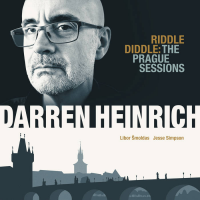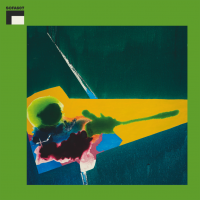Home » Jazz Articles » Extended Analysis » Steve Reich: Steve Reich: The ECM Recordings
Steve Reich: Steve Reich: The ECM Recordings
But the road to that acceptance has been thorny and difficult. When, by the mid-70s, both Reich and Philip Glass were able to attract a good number of young fans to their concerts, the musical establishment of that era began to launch a barrage of hysterical invective against them, and the Minimalists. The antagonism between younger composers and the musical establishment is a time-honored ritual but the level of polemics were extraordinary. These new composers broke every rule in the book as they used cheap electric pianos, were amplifying the sounds of voices and wind instruments or were employing strong pulsating rhythms and much worse they employed repetitive and slowly changing harmonies with long tunes. All of that badmouthing was shattered away with the success of works such as Music for 18 Musicians or Einstein on the Beach which put these composers on the music map.
The aesthetic of minimalism was nowhere better perceived than in the development of the record label ECM. Exploration has always been a key motto for this label. It was the first label that has devoted itself seriously and successfully to new music that grew out of the jazz field. It was prominent in terms of presenting music that straddled the line between composition and improvisation. During the '70s, producer and founder, had sought out and recorded Reich, and had even embraced other Minimalist composers such as Meredith Monk and Arvo Part, thus opening a new chapter in the label's history with the New Series. Reich celebrated his 80th birthday on 3rd of October 2016 and ECM released a limited box set of his work with the label to mark this occasion. Reich's music, ideas, and aesthetics have had an enormous impact on today's culture and his ideas and sounds were emulated by an army of musicians and composers from singer David Bowie, ambient pioneer Brian Eno to Sonic Youth and Radiohead. Featuring all of the original liner notes to the three records by Reich, it also features photographs from the sessions including a new essay. The box captures probably the most important phase in the oeuvre of one of the most important composers ever.
Music for 18 Musicians / Music For Large Ensemble / Violin Phase / Octet / Tehillim
During the course of the '70s, Reich began straying away from the stripped-down Minimalism that was characteristic for his early works. Although he still wrote pieces that employed the barest minimum of means, he also began writing for larger ensembles where he would center his attention the most. An example to this is Music for Mallet Instruments, Voices, and Organ (Deutche Grammophon, 1973), a lush and appealing work for a group of 11 musicians. Reich's music follows a consistent pattern of growth, from early works of limited instrumentation and performers to the chamber-sized pieces of the early '70s, to the 1976 composition Music for 18 Musicians, which requires a far larger ensemble than any previous work by a so-called Minimalist, and ultimately to the choral and orchestral works of the '80s. In contrast, composer Philip Glass gave little indication during the early '70s of the dramatic leap in scope and substance his music would take with the 1976 productions of Einstein on the Beach.
Music for 18 Musicians predates Philip Glass' aforementioned Einstein on the Beach by two months, and although it is a less celebrated work it too presents a turning point. This piece is based on a cycle of eleven chords; the series is played at its beginning and end. In between are eleven sections each built up from one of those eleven chords. Music for 18 Musicians is a subtle piece and the whole composition unfolds almost like a dreamscape. Reich webs rhythmical pulses with increasing intensity and shimmering melodies that it feels meditative and flowing. The multi-layered tidal architecture contains echoes of Indonesian gamelans, which Reich studied in 1973 and 74, and the 20th-century organum, or sacred chanting, of the Notre Dame composers Leonin and Perotin.
As influential on jazz musicians as on DJs, Music for 18 Musicians was a perfect fusion. Its uncanny brilliance brought Reich mass fame. Concerts were sold out and the record was a big seller. While he received an avalanche of offers to write scores, at the time Reich had a different agenda or a personal awakening. Having married the video artist Beryl Korot who studied Jewish faith, Reich was also inspired to study the mystical teachings of Kabbalah, Torah, and the Talmud. These studies have brought him in contact with cantillation or Hebrew singing. He even went to record these traditional chants in Israel.
Due to contractual demands in various countries he had to compose three fair-sized works in as many years. The Music For a Large Ensemble was a score for 30 players, representing each of the orchestral families—winds brass, strings, percussion, and female voices. Reich had used the canonic system of serial repetition to create a wave-like motion. Octet was premiered in 1979 by 10 musicians but it is for more instruments than eight, with players doubling. These compositions have in common an almost hypnotic density of rhythms and a melodic strength that was not evident in his earlier scores. It's an intoxicating piece of work with warbly beats that build up and float down into an intricate interplay.
On a creative roll, Reich had pushed forward and had incorporated his Hebrew studies into Tehillim. The word Tehillim means "praises" and it is based on ancient Hebrew psalms. But this work nevertheless included electronic instruments, gamelan, folk and baroque music. At the time, he had written two version of this work one for his ensemble and one for a symphony orchestra. There is a vibrant tribal element in the percussion and the clapping in the background of a quartet of voices that interweave together in a wind of melodies. There is a shift of sonorities and tension which overall has a magical and hypnotic listening effect.
Track Listing
CD 1: Music for 18 Musicians: Pulse-Sections I-X--Pulse.
CD 2: Music for a Large Ensemble; Violin Phase; Octet.
CD 3: Tehillim Parts I & II: Parts III & IV.
Personnel
Steve Reich
composer / conductorCD 1: Steve Reich: Marimba, Piano; Shem Guibbory: Violin; Ken Ishii: Cello; Elizabeth Arnold: Voice; Rebecca: Armstrong: Voice; Nurit Tilles: Piano; Larry Karush: Piano, Maracas; Gary Schall: Maracas, Marimba; Bob Becker: Marimba, Xylophone; Russ Hartenberger: Marimba, Xylophone; James Preiss: Metallophone, Piano; Steve Chambers: Piano; David van Tieghem: Marimba, Piano, Xylophone; Glen Velez: Marimba, Xylophone; Virgin Blackwell: Clarinet, Bass Clarinet; Richard Cohen: Clarinet, Bass Clarinet; Jay Clayton: Piano, Voice; Pamela Fraley: Voice.
CD 2: Russ Hartenberger: Marimba; Glen Velez: Marimba; Gary Schall: Marimba; Richard Schwarz: Marimba; Bob Becker: Xylophone; David van Tieghem: Xylophone; James Preiss: Vibraphone; Nurit Tilles: Piano; Edmund Niemann: Piano; Larry Karush: Piano; Steve Reich: Piano; Jay Clayton: Voice; Elizabeth Arnold: Voice; Shem Guibbory: Violin; Robert Chausow: Violin; Ruth Siegler: Viola; Claire Bergmann: Viola; Chris Finckel: Cello; Michael Finckel: Cello; Lewis Paer: Bass; Judith Sugarman: Bass; Virgin Blackwell: Clarinet, Bass Clarinet; Mort Silver: Flute, Piccolo; Ed Joffe: Soprano Saxophone; Vincent Gnojek: Soprano Saxophone; Douglas Hedwig: Trumpet; Marshall Farr: Trumpet; James Hamlin: Trumpet; James Dooley: Trumpet.
CD 3: Pamela Wood: Soprano; Cheryl Bensman: Lyric Soprano; Rebecca Armstrong: Lyric Soprano; Jay Clayton: Alto; Bob Becker: Percussion; Russ Hartenberger: Percussion; Garry Kvistad: Percussion; Steve Reich: Percussion; Gary Schall: Percussion; Glen Velez: Percussion; Virgil Blackwell: Clarinet, Flute; Mort Silver: Clarinet, Piccolo; Vivian Burdick Oboe; Ellen Bardekoff: English Horn; Edmund Niemann: Electric Organ; Nurit Tilles: Electric Organ; Shem Guibbory: Violin; Robert Chausow: Violin; Ruth Sigler: Viola; Chris Finckel: Cello; Lewis Paer: Bass; George Manahan: Conductor.
Album information
Title: Steve Reich: The ECM Recordings | Year Released: 2016 | Record Label: ECM Records
Tags
PREVIOUS / NEXT
Support All About Jazz
 All About Jazz has been a pillar of jazz since 1995, championing it as an art form and, more importantly, supporting the musicians who make it. Our enduring commitment has made "AAJ" one of the most culturally important websites of its kind, read by hundreds of thousands of fans, musicians and industry figures every month.
All About Jazz has been a pillar of jazz since 1995, championing it as an art form and, more importantly, supporting the musicians who make it. Our enduring commitment has made "AAJ" one of the most culturally important websites of its kind, read by hundreds of thousands of fans, musicians and industry figures every month.



















